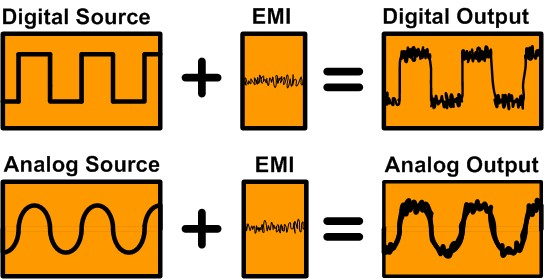Analog communication is a form of communication in which the message that is transmitted is done via analog. This means that an analog signal is transmitted during the communication process. The analog signal is usually obtained from a variety of sources such as video shooting and speech.
Analog communications tend to rely on simpler technology and the signals are usually continuous. An example of an analog communication is using talking to someone or sending a letter to communicate with another party.
On the other hand, digital communications refer to communication carried out using digital technology. Digital communications continue to expand especially with the growth of social media. You can use email, blogs, and social network pages to communicate.
Comparing Digital and Analog
One of the main benefits of using digital communications as opposed to analog communications is that they are immune to noise. There is always some noise or unwanted voltage in a transmission path and this can interfere with the communication process. It is impossible to eliminate this noise completely but it is necessary to reduce it as much as possible to ensure the signal is transmitted effectively. In analog communication the noise combines with the signals that are sent and this leads to distortion. However, when you are using digital communication it is possible to eliminate the unwanted voltage at the receiver’s end. It is difficult to eliminate the noise in analog communication once it combines with the signal.
Digital communication offers better security compared to analog communication. This is because the former involves a variety of coding techniques that are not available to analog forms of communication.
Analog communications are more expensive because they require amplifiers to make sure signals are clear throughout the transmission path. Signals tend to fade as they pass through transmission paths and this makes it necessary to reconstruct and retransmit them several times. Digital communications rely on repeaters to transmit the signals. For analog communications, it is necessary to use amplifiers for every two to three kilometers of transmission path. On the other hand, digital communications need repeaters for each 5 to 6 kilometers of transmission path.
Digital communications tend to use more bandwidth compared to analog communications. It is important to note that bandwidth is often a scarce resource and this makes it necessary to make the most of what is available. This may explain why while there has been a shift towards digital communications; people still rely on analog communications to ensure efficient use of available bandwidth.
It is easy to manipulate digital communications and they are also flexible, allowing users to make adjustments depending on their needs.
Digital communications allow users to store the transmitted messages for a longer period without damage concerns compared to analog communications. It is easier to store messages in a memory card as opposed to paper files that are easily get lost or damaged.
Digital communication helps to save time because it is possible to interact with more than one individual in different locations in real time. Video conferencing is a good example of digital communications that makes this possible. This is not possible through analog communications.



